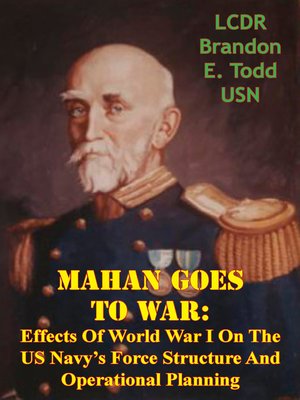Mahan Goes to War
ebook ∣ Effects Of World War I On The US Navy's Force Structure And Operational Planning
By LCDR Brandon E. Todd USN

Sign up to save your library
With an OverDrive account, you can save your favorite libraries for at-a-glance information about availability. Find out more about OverDrive accounts.
Find this title in Libby, the library reading app by OverDrive.



Search for a digital library with this title
Title found at these libraries:
| Library Name | Distance |
|---|---|
| Loading... |
A. T. Mahan's 1890 book The Influence of Sea Power on History presented a theory of sea power that proclaimed the capital ship-centered battle fleet essential to any great maritime nation's long-term prosperity. Mahan also formulated a beguilingly simple operational concept based on the teachings of Jomini. His ideas quickly became dogma in the world's navies, including the U.S. Navy. In the decades before World War I, the U.S. Navy's force structure and operational plans reflected Mahan's emphasis on the battleship and fighting as a concentrated fleet. The naval conflict between Germany and Great Britain in World War I did not resemble Mahan's vision for what war at sea between two great powers should look like. Rather than consisting of decisive battles between fleets of capital ships, the War involved distant blockade, raids, mining, and especially commerce raiding by German submarines. Mahan's rival theorist, Sir Julian Corbett, better described the character of World War I. Despite the advantage of almost three years of observing the European conflict, the U.S. Navy did little to prepare for this new kind of war. It entered the War in April, 1917 with a "top-heavy" force of battleships, and operational plans completely unsuited to the anti-submarine conflict it would undertake. This monograph attempts to determine the effects of World War I, a decidedly non-Mahanian war, on the U.S. Navy's force structure and operational planning. These variables manifest the Navy's ends, ways, and means, and thus shed light on the theoretical underpinnings of the Navy's policy.







